Inside
Circus World—
Where the History of
the American Circus Survives
by Bob Brooke
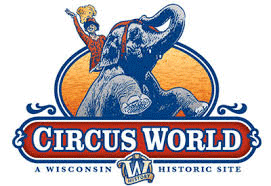 Who loves the circus? You’d probably say
everyone, but if animal rights activists and others have their way, the
circus, as thousands of people know it, may soon be a thing of the past.
But there’s hope for preserving the history of this unique form of
entertainment. Who loves the circus? You’d probably say
everyone, but if animal rights activists and others have their way, the
circus, as thousands of people know it, may soon be a thing of the past.
But there’s hope for preserving the history of this unique form of
entertainment.
What began 56 years ago as a grouping of six old circus wagons on less
than an acre of land, has become an internationally recognized and
respected museum of the American Circus, sprawling over 64 acres in
Baraboo, Wisconsin, with 30 permanent structures, including seven winter
quarters buildings, plus the Ringling Brothers Circus Train shed
complex. Circus World is, to say it mildly, a National Treasure.
The Beginnings of Circus World
As the glory days of the great railroad circuses began to fade, John M.
Kelley, personal attorney for the Ringling brothers, who had retired to
Baraboo, realized that someone needed to preserve the remnants of the
colorful American circus before it faded into history. So he joined
forces with members of the Gollmar Family, first cousins to the
Ringlings and circus owners themselves. The team incorporated Circus
World Museum as a historical and educational facility in 1954. Following
Circus World’s opening on July 1, 1959, Kelley and the Gollmars deeded
the site debt-free to the State Historical Society of Wisconsin.
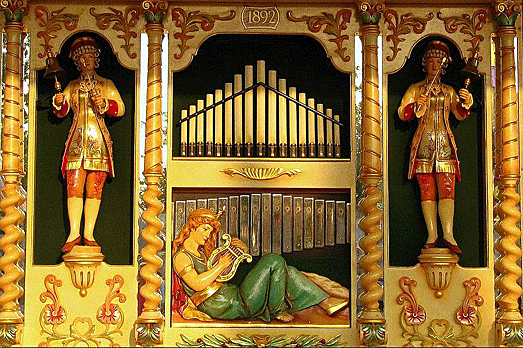
They chose Baraboo as the home of the new museum since it was also the
home of the Ringling Brothers. It was from there in 1884 that they began
the first tour of their new circus. Over six seasons, the circus
expanded from a wagon show to a railroad show with 225 employees,
touring cities across the United States each summer. Baraboo remained
the circus's headquarters and wintering grounds until 1918, when the
Ringling Brothers Circus combined with the Barnum and Bailey Circus,
which the Ringling Brothers had bought out in 1908.
In 1960, Charles Phillip “Chappie” Fox became director of the fledgling
museum. He knew there were hundreds of 19th and early 20th century
circus wagons lying in disrepair across the United States and Europe, so
he set out to acquire, preserve, and restore them.
What to See at Circus World
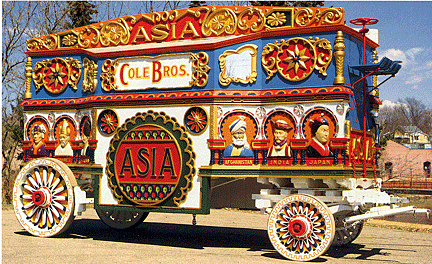 The non-profit Circus World Museum Foundation operates the museum, which
features not only circus artifacts and exhibits, but also presents daily
live circus performances throughout the summer. The non-profit Circus World Museum Foundation operates the museum, which
features not only circus artifacts and exhibits, but also presents daily
live circus performances throughout the summer.
The site on which the Museum now stands on the former wintering grounds
of the Ringling Brothers Circus and includes eight of the ten remaining
Ringling buildings. Circus World Museum holds one of the largest
collections of circus materials in the world, including old circus
wagons, posters, photography, and artifacts used by shows from all over
the United States. The museum also has smaller collections of Wild West
show and carnival equipment and memorabilia.
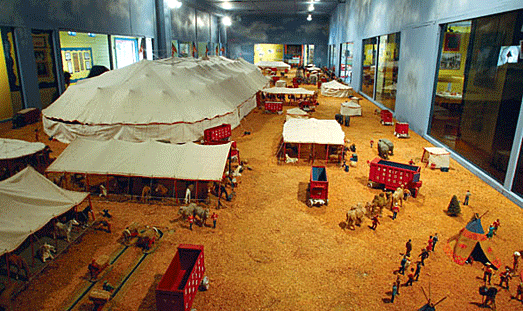
Ringlingville consists of the remaining buildings of the original
wintering grounds of the Ringling Brothers Circus, a National Historic
Landmark, and includes the Ring Barn, Elephant House, Animal House,
Baggage Horse Barn, Winter Quarters Office, and Wardrobe Department.
Tours of Ringlingville present information on the history of the
Ringling Brothers Circus, as well as offering behind the scenes glimpses
into the efforts taken by the circus while preparing for shows.
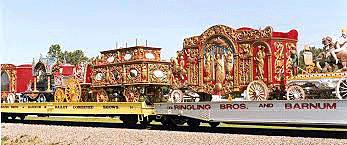 The Irvin Feld Exhibit Hall is the museum's largest building and houses
exhibits on the history of the Ringling Brothers Circus, as well as
other exhibits relating to general aspects of circuses and circus
history. The Irvin Feld Exhibit Hall is the museum's largest building and houses
exhibits on the history of the Ringling Brothers Circus, as well as
other exhibits relating to general aspects of circuses and circus
history.
Visitors can watch daily circus and magic show performances in the
Hippodrome, the Museum’s permanent big-top. The W.W. Deppe Wagon
Pavilion houses a collection of 50 restored antique circus wagons.
The Museum uses the C.P. Fox Wagon Restoration Center to refurbish
Circus Wagons, and visitors can view wagon restorations in progress.
The Great Circus Parade
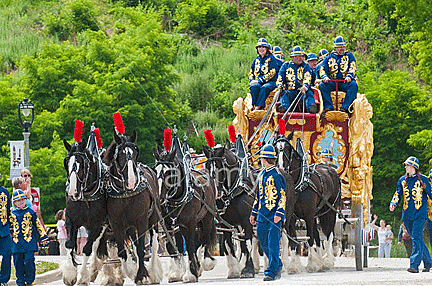 In 1963, with help from Ben Barkin, and with sponsorship by the Schlitz
Brewing Company, Chappie Fox established The Great Circus Parade® to
spotlight the Museum’s collection of circus wagons and to fund
acquisition and restoration, and to promote Circus World. The Parade
raises funds for the Museum and makes possible the purchase of
additional land and exhibits. In 1963, with help from Ben Barkin, and with sponsorship by the Schlitz
Brewing Company, Chappie Fox established The Great Circus Parade® to
spotlight the Museum’s collection of circus wagons and to fund
acquisition and restoration, and to promote Circus World. The Parade
raises funds for the Museum and makes possible the purchase of
additional land and exhibits.
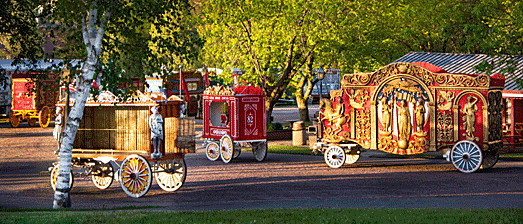
When held in Milwaukee, the parade entails a two-day journey by train
across Wisconsin, from Baraboo to Milwaukee, making brief stops at
cities along the way. An encampment for several days prior to the parade
at Veteran’s Park on Milwaukee's lake front allows visitors to view the
circus wagons up close, take elephant, camel, and zebra rides, and view
historical circus artifacts. The parade, itself, takes two hours as it
traverses a three-mile route through downtown Milwaukee. It stopped for
three years and resumed in Milwaukee in 2009.The 2009 parade showed off
50 circus wagons, between 250 and 400 horses, and 30 bands.
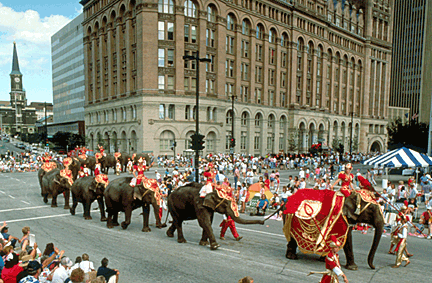 Today, Circus World is revitalized by a spirit of cooperation and
renewed interest. The design, construction, and installation of new
exhibits, plus the restoration of original Ringling structures, and
exciting live programs continue to celebrate America’s rich circus
heritage. Today, Circus World is revitalized by a spirit of cooperation and
renewed interest. The design, construction, and installation of new
exhibits, plus the restoration of original Ringling structures, and
exciting live programs continue to celebrate America’s rich circus
heritage.
For more information on Circus World,
click here.
< Back
to More Antiques to View
Next Article >
|
